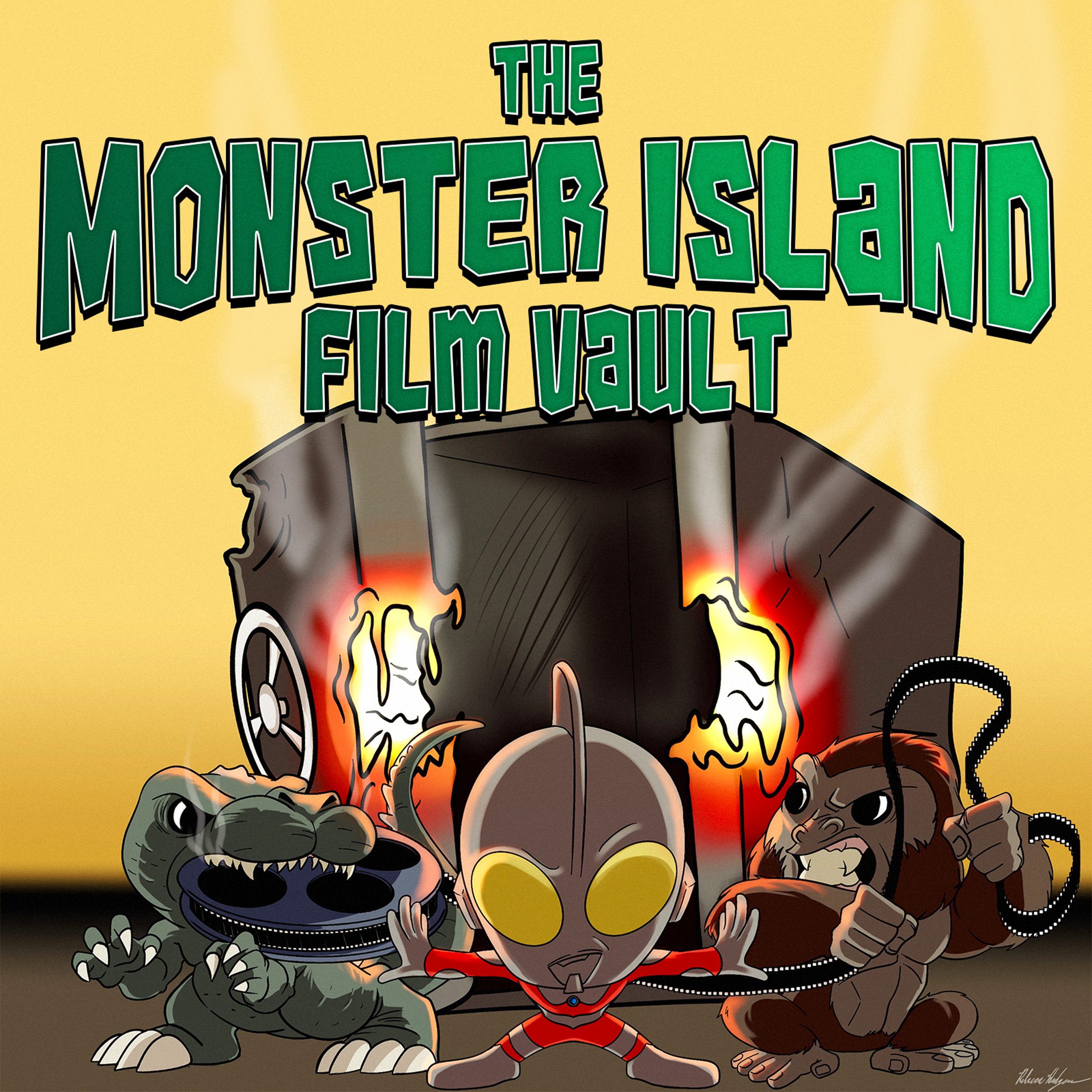Welcome to the first entry of Jimmy’s Notes! My blog series will feature nitpicks supplements on each episode of The Monster Island Film Vault. Nathan does lots of research and works hard at editing every episode, but he and the Tourists don’t always get stuff right (unlike his intrepid producer) and can’t include everything. I will correct any errors and feature additional information not in the episode–and take the opportunity to riff everyone and get away with it. 😛
So, let’s get started.
Corrections
-Okay, this first one is on me since I write the Entertaining Info Dump. I wrote that King Kong paved the way for Godzilla and the kaiju genre “three decades later” when it was actually two decades later. Apparently, I forgot how to math there for a second. My friends at NASA would be disappointed.
-I also forgot to mention
the IMDB score for the film in the Info Dump (oops). It’s 7.9.
-Nathan said “TMC” when
he meant “TCM”—twice. Once I can understand, but twice? Was he thinking of the tabloid TMZ and not Turner Classic
Movies? I feel insulted for TCM. On a related note, he said it was TCM who
added the overture to King Kong in
2005 when it was actually Warner Bros.
-Both Nick and Tim mispronounced “Denham” as “Dunham.” I guess they buy a lot of sporting goods.
-Nathan said the name
“Skull Island” is in the novelization of King
Kong. It’s not. It was used in RKO’s promotional materials. In the film
it’s called “Skull Mountain Island.” I don’t think the name was spoken in a
film until either the 2005 remake or Kong:
Skull Island. I’ll ask around. I’m sure one of the scientists studying the
kaiju will know.
-Nathan calls Kong a
monkey when he’s an ape. Even the Tourists corrected him on that during the
recording by saying even VeggieTales knows the difference! I
should’ve thrown a (Bob the) tomato at him for that.
-Everyone said there was
a brontosaurus in this film, but some say the brontosaurus is actually an Apatosaurus.
Since most sources say the former, I can’t hold that against them.
-Joe incorrectly said it
was the “Monster Island Resort” when it’s the “Monsterland Resort.” An easy
mistake, although the Island’s Board of Directors is very particular about
keeping the branding straight (which makes me think they should’ve made the
name a bit more different, but hey, I just work here).
-Nathan said Son of Kong was released six months
after the original when it was actually nine months. He must’ve gotten that
cash-grab sequel confused with the other cash-grab
sequel starring another famous resident on the Island. ::cough-cough::
Godzilla. ::cough-cough::
Additional Notes: The Film
Now for some things from Nathan’s notebook that weren’t mentioned in the episode. This isn’t all of his notes, but they’re the ones I thought were the most important of what he omitted:
-“Are the natives depicted in a racist fashion? It is
weird that a South Seas island has black people on it. I read an essay that
went into great detail about this. The chief is played by Noble Johnson, who
actually gets listed in the opening credits and is portrayed as a strong man. A
black man getting listed like this was unheard of back then.”
-“How convenient for the native
warriors that Ann was right there so they didn’t have to go on the ship. They
must’ve read the script. :P”
-“Charlie the cook is
considered ‘racist’ now, but he is played by Chinese actor and is treated well
by everyone. He speaks broken English.”
-“The missing ‘spider pit’
sequence. In script but may or may not have been filmed. Some claim to have
seen it. Cut by Cooper because it wrecked the pacing. Recreated by Jackson and
WETA. Had a triceratops-like dino. That’s why one sailor looks back while
running and why sailors don’t run back on log. I gotta say, if some of them
survived, they’re tough hombres!”
-“Schoedsack and Cooper
are piloting the plane that kills Kong.”
-“Kong’s origins are
ambiguous; the line between science and myth blurred. Part of the appeal. Harry
Harrison has a crazy ‘alternate universe’ origin story. Not surprising given he
writes alternate history.” (Jimmy here:
If I remember correctly, this involved a man being cursed to take the form of a
gorilla by island gods).
-“Esther M. Friesner
compared the King Kong story to that of Enkidu in The Epic of Gilgamesh and Samson in the Bible because they are
strong men undone by beautiful women.”
-“In China, ‘kong’ means ‘strong.’”
Additional Notes: The Depression
-“Optimism persisted despite the crash. John D. Rockefeller said, ‘These are days when many are discouraged. In the 93 years of my life, depressions have come and gone. Prosperity has always returned and will again.’” (Wikipedia)
-“Birthrates for 14 major
countries fell 12% from 19.3 births per thousand population in 1930, to 17.0 in
1935. Families wanted to avoid having children until they achieved more
financial stability. In Canada, half of Catholic women defied Church teachings
and used contraception.” (Wikipedia)
Conclusion
Now that I’ve gotten my first Note out of the way, I need to get back to writing the Entertaining Info Dump for Son of Kong if for no other reason than to remind Nathan of his contractual obligations. 😛
Follow me on Twitter.
#JimmyFromNASALives











